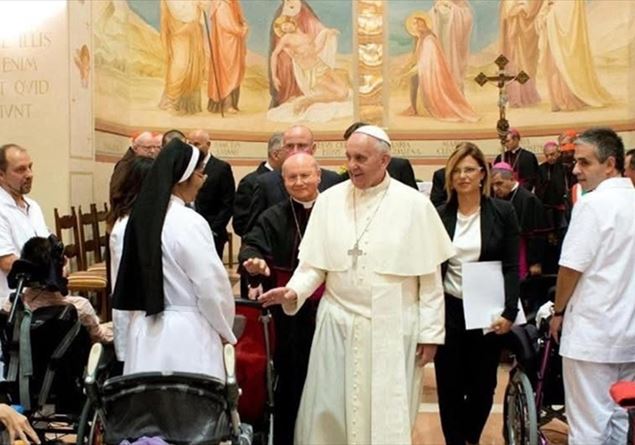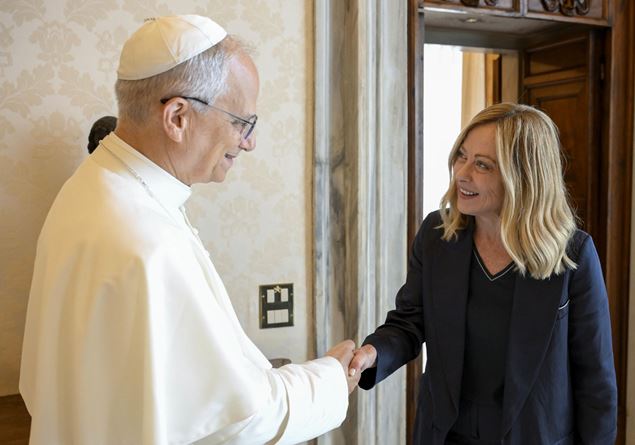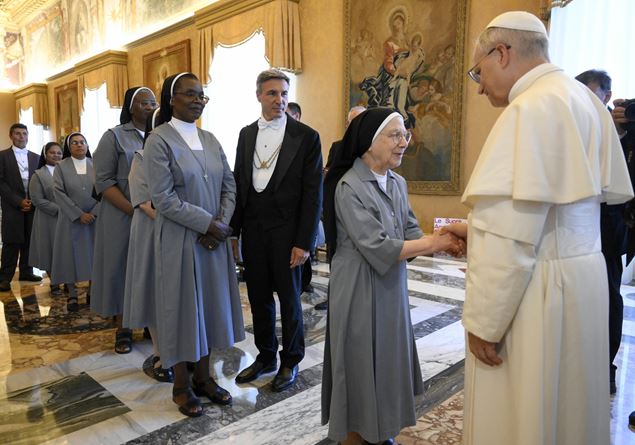Francesca Di Maolo with Pope Francis.
by Francesca di Maolo
President of the Seraphic Institute
There are gestures that do not pass, but that remain and become a turning point. It was October 4, 2013 when Pope Francis entered the chapel of the Seraphic of Assisi and traced the route of his pontificate, of a church next to the last and to the excluded people. A church capable of moving, because it recognizes Christ in the marked bodies. That visit, among the first of his pontificate, was not only a touching moment but marked the beginning of a deep bond with our boys and together the start of a magisterium that would put the fragility in the center.
That visit, born in her first pope from Pope in the footsteps of San Francesco, was much more than a meeting. It was the beginning of a special relationship, which would have strengthened over time, a link that accompanied the entire path of a pontificate focused on the value of fragility understood as a place where Christ reveals himself. Francesco chose to begin his pilgrimage to Assisi from a place of care. He crossed the gate of the Seraphic and, without formalities, stopped with each of the children and young people with serious and very serious disabilities. Everyone turned a smile, a caress. They were the first months of his pontificate, but already in that gesture the direction was evident: he wanted a church capable of letting himself be touched and recognizing Christ in the most fragile.
He did not read the speech he had prepared, but he spoke to his arm, just like in the family, and indicated in the bodies of our boys “the wounds of Jesus”. He said that those wounds “must be listened to”, and he added: “Not as news from the front page, destined to last a few days: they must be listened to by those who say they are Christian, as a living part of the Gospel”. At the end of the meeting – he turned to the mother of one of the boys and said to us: “I was kissed today by God”. That visit today is not only a memory to be kept, but a responsibility that has accompanied us since then. Francesco indicated us clearly where we have to look if we really want to follow the Gospel.
The Seraphic, founded in 1871 by Blessed Ludovico da Casoria and dedicated to San Francesco, has always been a place where fragility is welcomed with competence and humanity and with that visit Francesco also made a symbolic place, a point from which to rethink the mission of the Church. He taught us with his words and gestures the logic of taking care: recognizing, being next to tenderness and stopping time. His way of looking at the boys, of being touched, of stopping to listen to families, has given body to an idea of the Church that must start from the excluded. Today, on the day of his death, we hear all the strength of his message. In a time when the value of people is often measured according to productivity or efficiency, Francesco has put the excluded back to the center. And his transition to the Seraphic has traced a clear line: the Gospel is measured in the ability to recognize and keep the dignity of each person, especially when he is fragile.










